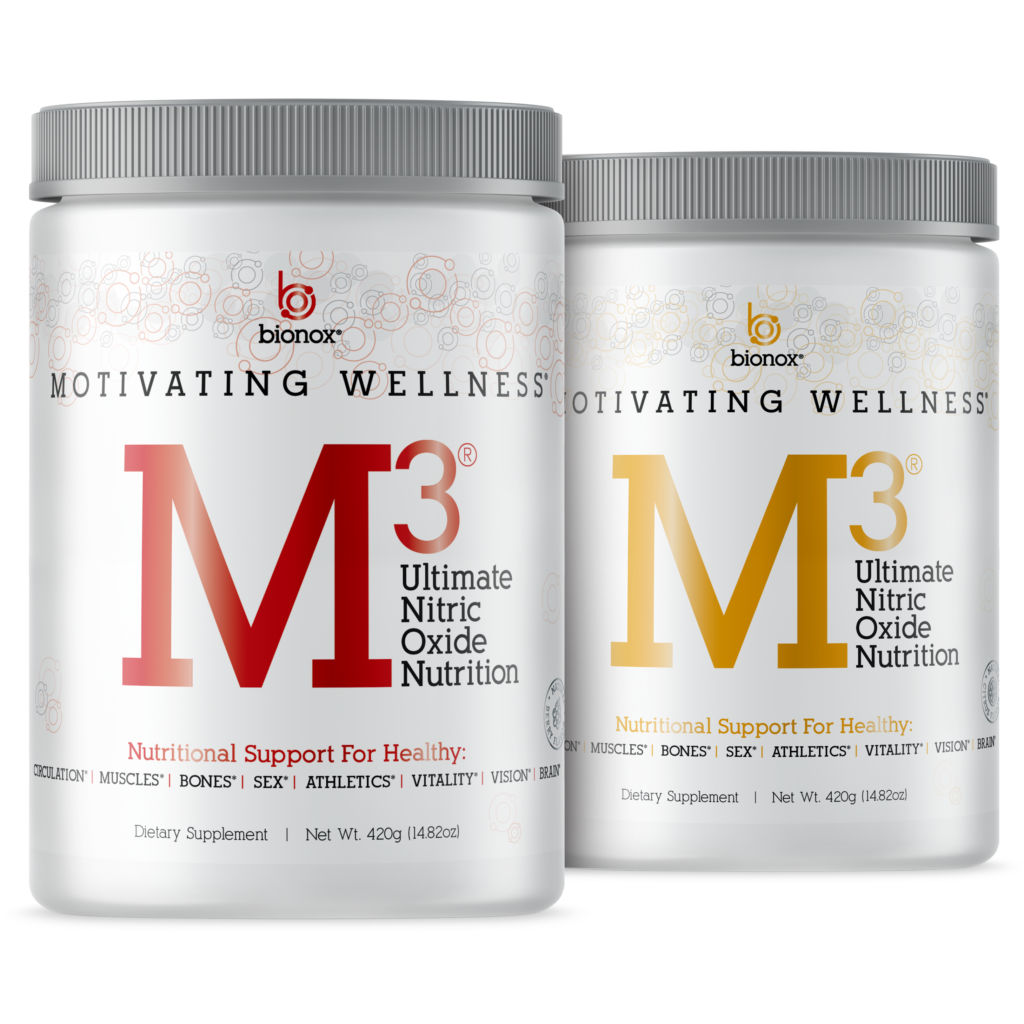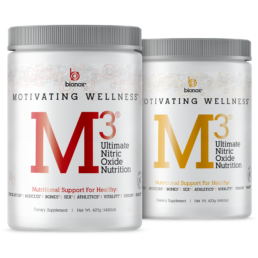How Much Arginine and Citrulline to Take.
As many people already know both arginine and citrulline help increase nitric oxide production in the body. This in turn help reverse and prevent many cardiovascular issues including heart disease. How do they do this and why is it important to take them together?
Timing is important
Arginine and Citrulline taken together have a synergistic effect. That means that taking any of them alone will not have the same effect as taking them both at the same time. Why is this?
One reason is that they work on different time frame. Arginine tends to be converted more rapidly into nitric oxide in the body, while citrulline takes longer. This means as one stops working the other one is just kicking in. This means you get more of a boost for a longer period of time.
There is also another synergistic effect of taking them both at the same time. As shown in this study for reasons not totally understood, taking both l-arginine and l-citrulline at the same time produced higher concentrations of nitric oxide within an hour or so of ingestion. What does that mean? It means that not only does taking them together give you a longer period of N.O. boosting, but it also makes the boost more powerful by increasing the bioavailability of nitric oxide.
Arginine to Citrulline Ratio
The ratio of Arginine to Citrulline is also important. Many products that offer both arginine and citrulline have them in a bad ratio ranging from 25:1 to 5:1. The proper ratio and most effective is 2:1.
M3 Ultimate Nitric Oxide Nutrition uses a 2:1 ratio of arginine to citrulline which means you are getting a properly proportioned mix of over 7 grams of of these two critical amino acids! This proprietary blend maximizes both absorption as well as nitric oxide production.
Why you should be taking Arginine and Citrulline
L-arginine helps maintain vascular elasticity and reverses build-up of soft plaque, even in pre-existing atherosclerosis.
In experimental studies, L-arginine:
- Increases NO formation
- Improves vasodilation
- Inhibits platelet aggregation
- Reduces leukocyte infiltration
- Diminishes superoxide radical formation
- Restore arterial elasticity
- Improve blood flow
- Enhance memory function
- Accelerate recovery from exercise
- Lower blood pressure
It can potentially reduce the symptoms of:
- chronic heart failure
- coronary artery disease
- peripheral arterial disease
- erectile dysfunction.
When Arginine & Citrulline Don't Work
If you have taken an arginine, citrulline, or even a beet root product and not seen the results you hoped for you’re not alone. While many people have experienced miraculous results from nitric oxide boosters that include those ingredients, some people report little to no success in improving their health.
Figuring out if something works or does not work is so much more complex than we typically think. In fact it’s a huge problem today in modern medicine. Think of cancer as an example. A drug is tested on a thousand people and if it cures one hundred of them, it’s thrown into the dustbin because that is not a high enough cure rate to make money off of. Instead of understanding WHY those one hundred people were cured and creating a cure for those people, the entire thing gets scrapped for economic reasons.
We can fall into the same thinking with arginine and citrulline. We may take a product for a month or so, not see the results we hoped for and then assume it’s just not going to work for us!
Thankfully, the production of nitric oxide in the human body is fairly straight forward and we now know why in some cases people do not respond to N.O. boosters like beetroot and arginine therapy.
The great news is it is really easy and straight forward to fix!


Understanding The Nitric Oxide Production Process
Nitric Oxide is created in your body when you ingest arginine, citrulline or a nitrate rich food like beets. The way it is created is via bacteria that live in your body. The bacteria convert the nitrates into nitrite and that in turn gets converted into nitric oxide. Therein for some lies the problem. These bacteria have special needs and if you don’t have them, your not going to benefit. Good news is you can get them to grow, cultivate them and start to see results fast!
Step #1
You may be thinking these little guys live in your stomach, and you would be partially correct, they are present there, however they primarily live under your TONGUE! This makes what you do to your mouth of upmost importance! Here is a little bit of information to give you a hint of what not to do:
One recent study found that using MOUTH WASH increased blood pressure by significant margins within ONE DAY OF USE. Incredible right? So why would killing bacteria in your mouth increase your blood pressure? Because if the entire nitric oxide production process, the process that keeps your veins and arteries healthy and healing is via bacteria in the mouth, then KILLING THEM IS KILLING YOU.
Take away: Stop using mouthwash! It’s that simple. It’s literally killing you.
Step #2
The bacteria are not done yet! They have another thing they need to be able to function. Again, here is a clue. People who take proton pump inhibitors and antacids have for years had massive spikes in heart disease when compared to non users. Science now tells us why. The nitric oxide producing bacteria NEED A PH OF 2 OR BELOW to do their job! So your stomach must be acidic. This does not mean your body needs to be acidic, your stomach however does.
Take away: Stop using antacids and proton pump inhibitors. These products stop all N.O. production in the body and are proven nitric oxide killers. Before using a nitric oxide product, simply take some apple cider vinegar before you use it and you will be well on your way to regrowth of the needed flora!
Step #3
Antibiotics. With the information from above this should be obvious by this point. Antibiotics kill everything. The good and the bad. Limit antibiotic use when you can. If you must take them ( and yes many times you must ) have a remediation protocol for after their use. Make sure to take plenty of good probiotics and to juice green veggies high in nitrates to help build back up the nitric oxide producing bacteria.
That’s basically it. Stop killing the important bacteria your body needs, avoid any medicines that may make your stomach less acidic and keep feeding the bacteria what they need. When you are compromised, and have little bacteria left, you want to build them back up using veggies at first. Once the bacteria that convert the nitrates into nitric oxide are working on the nitrate sources, they can then work on the arginine and citrulline.
Roasted Beet Arugula Salad
M3 Ultimate Nitric Oxide Nutrition is designed to provide a massive N.O. boost in your body. One of the ways it does that is via the nitrates found in beets. Arugula is also high in nitrates. You can boost the effects of M3 Ultimate Nitric Oxide Nutrition by eating more nitric oxide producing foods and creating the right PH in your stomach. To produce nitric oxide your stomach needs a PH of 2 or below. In other words, it needs to be acid. How do we keep the stomach acidic? Vinegar! So here is a great recipe that combines not only a few veggies rich in nitric oxide, but vinegar via vinaigrette!

Ingredients
8 oz. of fresh arugula
3 roasted beets, sliced
2 oz. of crumbled goat cheese
1/3 cup of sliced almonds
1 teaspoon of fresh thyme
Dijon Vinaigrette:
1 tablespoon of dijon mustard
2 tablespoons of apple cider vinegar
3 tablespoons of olive oil
1 teaspoon of honey
1/2 teaspoon of dry basil
salt & pepper
Instructions
In a small bowl combine the apple cider vinegar, dijon mustard, olive oil, honey, dry basil, salt, and pepper. Mix until thoroughly combined! Set aside.
In a large bowl add fresh arugula, golden beets, red beets, sliced almonds, goat cheese, and fresh thyme. Drizzle with dijon vinaigrette, toss, and serve.
We got this recipe from HERE, so a thanks to the author at joyfulhealthyeats.com!
How Long Does it Take M3 to Start Working?
How long does it take M3 to work? I think what people are really asking is how long before they see any change or any differences. So, it starts to work right away but as far as how they might feel what we see consistently and a lot of this depends on their age and their health history as well as you know the type of issues that they're dealing with at the time, but consistently what we find is that people who use especially the 40 year olds and over because as we know they have less nitric oxide that they're producing but they start to notice that their energy improves and this no doubt is due to the more oxygenation that they get because nitric oxide is one part oxygen. So they get more oxygenation as well as the mitochondria converts the amino acids arginine and citrulline which there's a heavy amount of those in M3.
It converts those into cellular energy and so people notice this energy boost but they also notice that they sleep better and that's because arginine is a precursor to human growth hormone. Before you go to bed these HGH levels should be optimal and as you go through your night's sleep the HGH helps for you to have a good restorative recuperative sleep so that you wake up feeling refreshed. Those are the two things that people start to notice right away. As far as long-term issues like blood pressure that may take a few days or up to a few weeks before that starts to respond and again that's because your arteries need to get more bounce in them or flexibility and so it takes a little time for those vasodilation effects to really take place and to have those type of benefits. With cholesterol and triglycerides again we start to see those things respond in about six months that's how long we recommend people wait before they get their lipids checked again.
As far as plaque regression which we have all the studies to show that nitric oxide does cause plaque to regress and again that's something that may take several months or years depending on their response again everybody is different on how they respond so what we do use is a little plethysmography meter that just sticks on the fingertip and it shows how healthy a person is far as their arteries are concerned. From a1 to a7 and consistently we see over a period of 90 days after we screen them that we start to see improvement 90% of time they show improvement after 90 days after taking the product as recommended. So many of you have been using M3 you're seeing great results for those that are still kicking the tires and wondering well we recommend that you give it a try at of course a 100% money-back guarantee, if it doesn't work the way that you want it to and see what it will do for you and we look forward to hearing your great story down the road!

Arginine vs. Beet Juice
How is it that beets create nitric oxide? What is the difference between beets and arginine? For starters, both beets and arginine as well as citrulline create nitric oxide. In fact spinach and other vegetables with nitrates also product nitric oxide. So how do they differ? What is the mechanism by which they work?
Beets
Lets talk about beets first of all. Beets are high in nitrates. Just like other vegetables high in nitrates like spinach and kale, your own bacteria located in your mouth help convert them into nitrites via good bacteria and good PH. So from nitrates to nitrites thanks to your own good flora is the first process on the way to become nitric oxide. One the nitrites enter the digestive tract and are absorbed they are converted again into nitrates. The nitrates are then converted in to nitric oxide and enter the blood stream. This is the point where nitric oxide can do all the amazing things this miracle molecule is known for.

Arginine
So how are beets and other vegetable sources of nitrates different from arginine?
When your body takes in arginine through various means like proteins. Products like hamburgers have somewhere between three to five grams of arginine. Most other meats and even beans like soybeans have various amounts of arginine. I myself like to consume arginine via supplements. In the body it's absorbed into the small intestine. Here is where it is taken into the blood stream and once it hits the endothelium of the arteries it's converted into nitric oxide. So the two substances, beets and arginine have two different methods of being converted into nitric oxide in the body.
Arginine vs beetroot powder - Which is better?
Really both are excellent ways for your body to get nitric oxide. However, after getting involved in the nitric oxide world back in 2005 the big deal was arginine at the time. During that time in my personal practice I saw great results from people using arginine based products. Arginine has been my personal supplement of choice then for quite a while. Some people point to a study that says people past 40 don't or can't absorb arginine. This has not been my personal experience at all. I have had patients as old as 90 get fantastic results when taking the right product. Having the right5 mix of compounds like citrulline and other absorption factors is key. Arginine is a great way to make nitric oxide. The recommended dosage is at least 5 grams a day. The beet nitrate pathway however is also a great way to boost your nitric oxide levels. The majority of the studies however have been done with Arginine, due to the Nobel Prize wining original studies that primarily focused on arginine.
Shop all products:
Nitric Oxide for Weight Loss
Nitric Oxide is a miracle molecule when it comes to heart health. It's actively used in treatments for a range of problems from Alzheimer's disease and depression to congestive heart failure. Did you know Nitric Oxide can also help you lose weight? Let’s see how we can use Nitric Oxide for weight loss.
Nitric Oxide has been shown to increase fat loss several studies. Your muscles are living tissue. They generate heat, move you around and therefore burn calories. It takes energy to maintain muscle. For those who go to the gym and exercise, this means a faster metabolism.
The Link Between Muscle & Nitric Oxide For Weight Loss
Nitric oxide is known as vasodilator. A vasodilator expands your blood vessels and arteries. This allows more blood and oxygen to flow to your body’s tissues, organs and muscles. Increased blood flow also means an increased ability to remove toxins and to take in nutrients. The combination of faster toxin removal and nutrient uptake translates into quicker recovery time. Quicker recovery time means more mobility, more time to train and more calories burned.
One of the toxins that is produced during strenuous exercise is lactic acid. If you have ever felt your muscles burn after or during an exercise, this is due usually to lactic acid build up. When too much lactic acid builds up, you just have to stop. It can prevent muscle contraction and it's painful.
Having high levels of N.O. prevents buildup of lactic acid. Since having less lactic acid means being able to do more exercise, nitric oxide directly maps to more calories being burned via longer walking, running, sporting or gym time. It also allows the muscle to grow more. Since muscle burns calories even while you sleep, this results in a faster metabolism.







